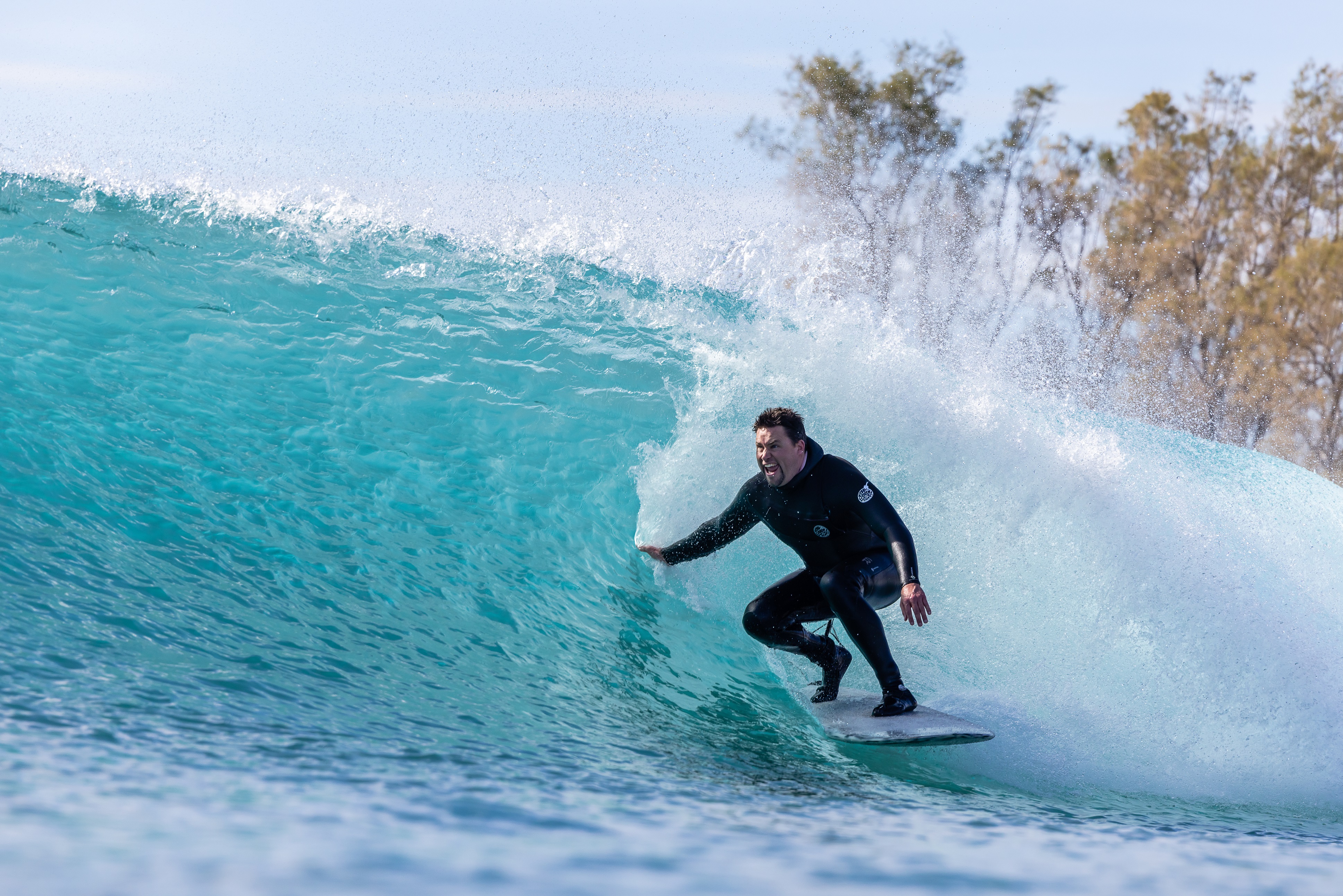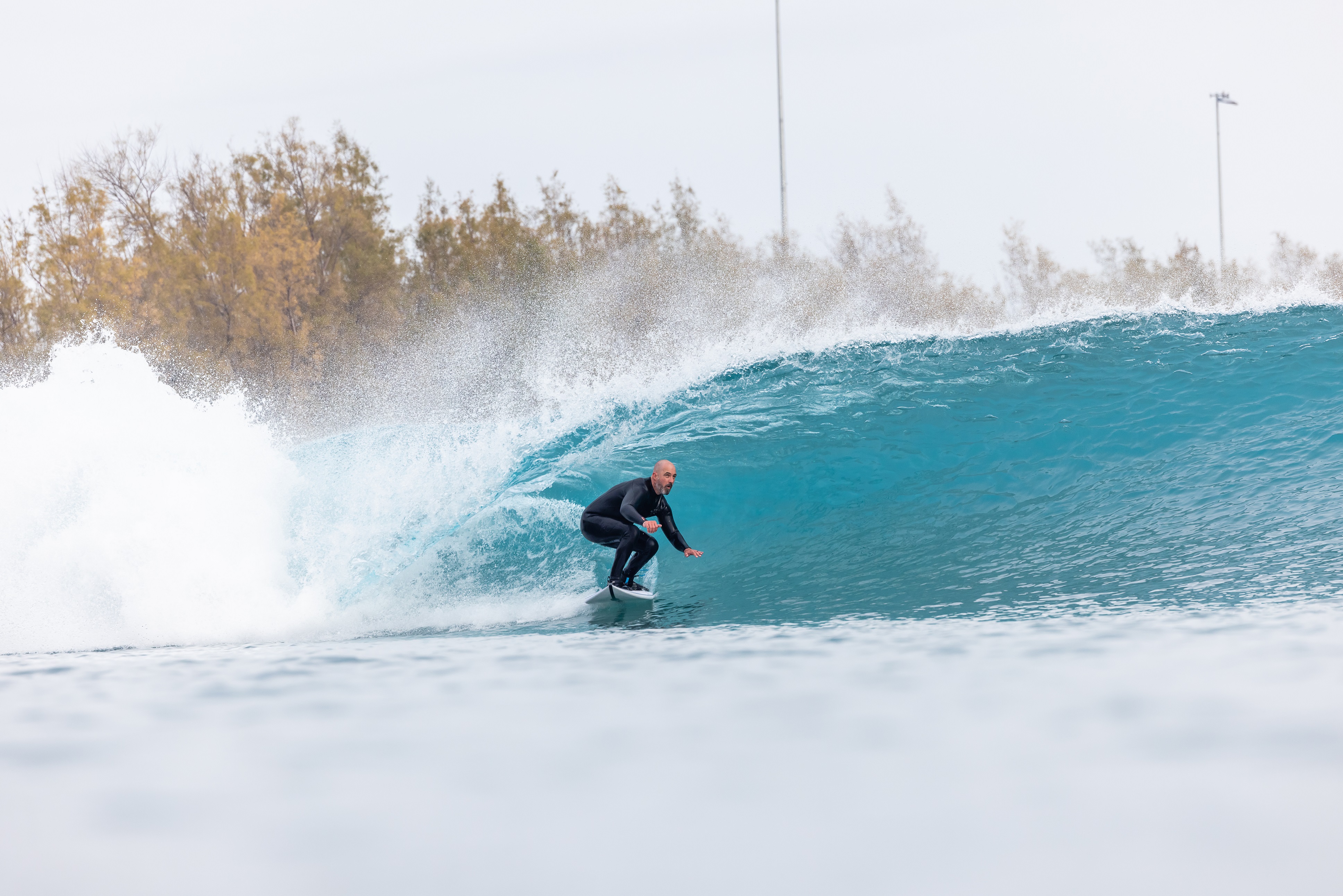Learning Curves at the Kelly Slater Surf Ranch

Another Surf Ranch Coaching trip done, and even more interesting results compiled. Once again, our group, with the pre-training we provided and the online course used, resulted in a group average 81% takeoff make rate at the priority takeoff areas. This is once again well above the average from trips without the pre-training (58%).

But that won’t be the point of this article as I’ve covered this twice now in the previous two trips (see Gaining An Advantage At Surf Ranch and Pre-Trip Surf Ranch Takeoff and Paddling Training Increases Probabilities of Making Waves).

Something new became unearthed. A question Barry and I had discussed a little on one of the podcast episodes (Skill Acquisition Methods, Benefits and Limitations) about learning curve with all of these new wave pools / training experiences.
One of the members of the recent trip to the Kelly Slater Surf Ranch had asked me if it was at all possible to not have two night sessions during the trip. Due to the structure of the trip, at least one of the groups will surf two night sessions and two day sessions while the other two groups will surf one night session and three day sessions.

At face value, one may think that having the one night and three day sessions is better. At least that is what this particular surfer thought.
But I prefer the two night sessions and two day sessions because of how the schedule works and the water temperature advantage that time of year. In the night session, water temps are warmer than the first two heats the next morning because of the previous day sun's impact on the water. And while I explained the great advantage of having the two night heats, this surfer still insisted he prefer the one night, then the three the next day.

Maybe he thought he would perform better in the daytime?
So that got me thinking. Can we decipher whether or not daytime surfing has an advantage on performance? At this point, I had three different trips in the books and now had the start of some patterns.
Here’s what I found.

No, there is no apparent advantage, according to the data so far.
How I found this result was comparing the day and nighttime takeoff statistics for all three of my coaching trips, and the day only statistics of the previous nine trips (in which I was a paddling coach for another group or a consultant for WSL)

After each of my coaching trips, I have the pleasure of compiling all the data and converting it into something that we might be able to use to improve the overall experience and the pre-training that we conduct. In addition, surfers have the option to do a post trip video review and in that review, we discuss the takeoff statistics for that individual.
What has been fairly common across all of the trips and across all of the individuals, is that the takeoff statistics improve with each heat surfed. My coaching trips show more improvement and earlier in the trip than the other non-coaching trips. But they all have what looks like a common learning curve pattern.

Generally, the first heat has the worst takeoff success rate. Almost all the heats across all trips (my trips and the previous ones) had the first heat as the lowest takeoff success rate (at the priority location). For my trips specifically, 7 out of 9 heats had this first heat as the lowest success rate. For the other trips, 23 out of 25 of the heats had the first heat as the lowest success rate.

Since the other trips didn’t have the same number of total heats as my coaching trips (most had only 3 heats for the trip, some just 2, and some 4 heats), nor did they have the same number of groups, we can’t compare the progression from heat to heat with every trip – only the few that had 4 heats total in a trip and the same number of groups (3).
However, the statistics on the first heats were comparable, since it’s the first heat all the time.

Here’s an interesting note: all but 1 of the other trips, the first heat of the trip was always during daylight hours. All nine heats on my trips were during the nighttime hours.
This piece of data shows a larger amount of proof that when it’s the first heat of the trip, it doesn’t matter if the surfer is surfing at night or during the day – the pattern of the first heat having the lowest takeoff success rate was consistent regardless of time of day.

What about the second heat? What happens there? 6 out of 9 heats on my coaching trips improved in Heat 2 while 3 of 9 did not improve their takeoff success rate in the Heat 2.
Again, here’s something else interesting: of the three groups that did not improve from Heat 1 to Heat 2, only 1 had their second heat during the night. The other two heats were daytime heats, further piling on support that performance at Surf Ranch has less to do with sunlight, and more to do with a learning curve.

Guess what? Heat 3 was always better than Heat 2 (in my coaching trips) – in all nine instances and groups. Sometimes, Heat 3 had the best takeoff success rate, meaning in some groups Heat 4 had a lower success rate. This could lead us to believe that fatigue (both mental and physical) could be setting in by Heat 4, or surfers are getting more comfortable trying new things during takeoff.

Learning curves are present at every wave pool you go to. Heck, they are present at any new surf break to go to, and any new training tool you use (boat surf, surf skate, etc.). This can be attributed to your brain adapting to a new environment, a new perspective, and trying to associate what it already knows to that new environment.

What you need to do is understand that this is happening, no matter what, and to lean into it. Lean into re-learning surfing, knowing that the brain will catch up quickly. Heat 3 was most likely the best because the brain finally settled into something it could relate the new experience to from past experiences. It calmed itself, and therefore the environment the surfer is in begins to slow down in their brain, opening up new possibilities.

Next time you’re in a new environment surfing, accept the learning curve. The sooner you accept it will happen, the faster you will move through it, and the more fun you’ll have. Learning is cool. Accept it.
I’ll see you in the water…

If you’re interested in being invited to our coaching trip to Kelly Slater Surf Ranch, please feel free and reach out.










All photos by Casey Figlewicz
Get Free Training, Quick Tips, News and Updates with the monthly newsletter!
Join our mailing list to receive the latest news and updates. Your information will not be shared.
